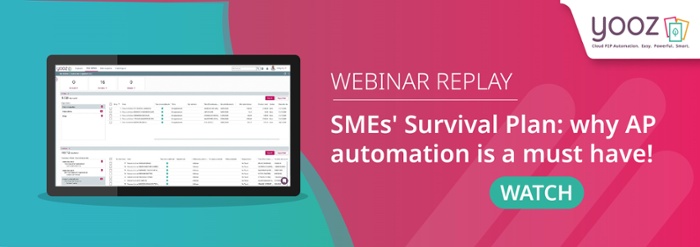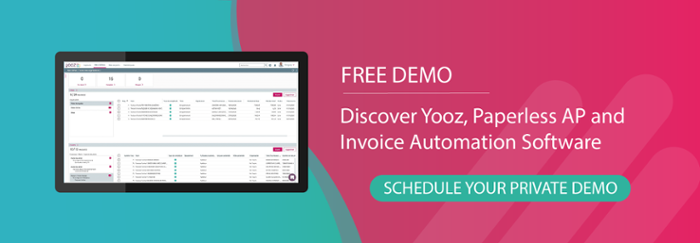The Accounts Payable (AP) process is an important aspect of any organisation in any industry, managing the payments made to suppliers and vendors and playing a significant role in determining the cash flow of an organisation. However, manual AP processes can be time-consuming, error-prone, and resource-intensive.
This is where the combination of Accounts Payable automation and shared services comes into play, providing businesses with a cost-effective, automated, and efficient solution for managing their AP processing. But what exactly are the benefits of combining Accounts Payable automation and shared services, and how can they streamline your organisation's invoice processing?
What is AP automation?
AP process automation refers to the use of technology - specifically software solutions - to digitise and automate the invoice workflow including capture, processing, approval, and payment. Having an automation process in place can help business to reduce the time and effort required in manual Accounts Payable processes, increase accuracy and efficiency, lower costs, and improve compliance.
One of the most significant benefits of implementing automation is that it eliminates the need for manual data entry and other tasks, thereby reducing the risk of errors and delays. And, thanks to modern technology used to automate processes, invoices and other documents can be automatically captured and matched with Purchase Orders (POs) and receipts, ensuring data validation and ensuring invoice data integrity right at the start of the Accounts Payable process and reducing the need for manual intervention. This allows employees to refocus their efforts on more strategic labor, such as managing vendor relationships and negotiating better payment terms.
Accounts Payable automation also provides management with greater visibility and control over their entire invoice workflow. With the availability of real-time data and analytics, it is far easier to monitor process performance and productivity, identify and bottlenecks and inefficiencies, and make informed, data-driven decisions.
What are shared services?
Shared services refers to the consolidation and centralization of back-office support systems – business processes that are used by multiple parts of an organisation which are then delivered across the organisation. Some of the most commonly recognised include human resources, finance, and the IT department. The goal of shared services is to standardize and streamline processes, reduce costs, and improve service levels by consolidating resources and expertise.
Shared services also provides greater scalability and flexibility. As businesses grow, shared services can scale to meet their needs without having to add additional resources or infrastructure.
When it comes to AP, the focus of shared services involves centralizing the AP function and consolidating the invoice processing across multiple business units or locations. By centralizing AP processing, businesses can reduce duplication of efforts, standardize processes, increase quality, and improve compliance.

Benefits of a combined effort
While AP automation and shared services each provide respective benefits, when combined they provide even more significant advantages including:
Reduced Costs: Combining automation and shared services can help businesses reduce or even eliminate the costs associated with manual AP processes such as paper-based invoicing and manual data entry. By automating and centralising processes, businesses can also reduce any duplication of effort and improve workflow efficiencies, resulting in additional cost savings.
Higher Accuracy: Automation helps to reduce the errors and inaccuracies associated with receiving invoices and manual processes such as data entry. Shared services helps standardise processes, therefore reducing errors associated with decentralised AP processing.
Increased Visibility: Organisations can easily obtain real-time data and analytics, allowing them to better monitor their AP performance and identify any bottlenecks, challenges, or inefficiencies. The ability to ensure data integrity helps management to make data-driven strategic decisions to improve their processes and optimize their working capital.
Enhanced Compliance: Accounts Payable automation and shared services can help businesses improve compliance with any regulatory requirements and internal policies. By standardizing processes and consolidating resources efficiently, business can also improve consistency and accuracy.
Improved Security: Together AP automation and shared services can help organisations strengthen security measures by reducing the risk of finance errors and fraud, centralizing controls (including payment approvals and user access) and enhancing real-time visibility that enables improved monitoring and identification of issues.
Strengthen Supplier Relationships: By streamlining invoice processing, businesses can improve the overall experience for their suppliers. Reducing manual errors and processing delays can help ensure that suppliers are paid both on time and accurately, enhancing supplier satisfaction and loyalty and possibly even resulting in early payment discounts.
Centralised processing and real-time visibility throughout the entire invoice workflow also means that a company can also provide better (and faster!) transparency into the invoice processing status, reducing supplier inquiries and chance of disputes. This can help further build stronger relationships with suppliers, leading to better negotiation terms, better pricing, and increased stability in their supply chain.
It is also worth noting that combining and implementing AP automation and shared services can help improve compliance with e-invoicing regulations thanks to standardised processes, reduced errors, faster processing, and the ability to better track and view invoicing activities. By implementing a cloud-based solution, organisations also automatically create a secure, scalable, and easily accessible centralised data repository: a digital platform where the data can be stored, managed, and accessed in a single location.
3 best practices for implementing AP automation and shared services
Successful implementation of AP automation and shared services requires careful planning and execution. Here are what we consider to be the top 3:
1. Define clear goals and objectives: Before implementing any new process, it is essential to clearly define your objectives and any benefits that you hope to achieve. This will help to measure the success of the implementation and ensure that it aligns with overall strategic objectives. Consider what outcomes you hope to achieve, such as reducing costs, increasing efficiency, or improving compliance. By establishing clear goals and objectives you can design a solution that meets your organisation's needs and helps to achieve your goals.
2. Involve stakeholders: A successful implementation depends on the involvement and buy-in of key stakeholders. It is important to involve stakeholders from different departments, business units, and even suppliers - any that might be directly affected by the new business systems and processes - throughout both planning and implementation. Not only will this help to ensure that the solution meets the needs of all stakeholders but also that they are committed to its success. It can also help to facilitate any future digitalization or implementation.
3. Plan and implement a phased approach: Implementing AP automation and shared services can be both complex and time-consuming. To help ensure success, we recommend implementing the solution in a phased approach. This involves breaking the implementation process into smaller, more easily managed stages, ones with clear milestones and deliverables.
A phased approach also allows you to test and refine the solution along the way, reducing any risk of errors and ensuring that the solution meets your company needs. It also helps to manage change more effectively, allowing stakeholders to gradually adjust to the new way or working versus having to make a complete, immediate change. By taking a phased approach you can also demonstrate any early wins or benefits, building momentum and buy-in for the solution across the organisation.

Is it worth combining and implementing both AP automation and shared services?
The combination of AP automation and shared services provides businesses with a powerful solution for streamlining their invoice processing. By digitalising and automating the AP process and simultaneously consolidating resources, organisations can lower costs, reduce errors, improve compliance, and gain real-time visibility and control over their entire invoice workflow and business operations.
However, successful implementation of the two requires careful planning and execution, including defining clear goals and objectives, involving stakeholders right from the start, and implementing a phased approach. By following these three best practices, businesses can achieve significant benefits and optimize their AP process for greater efficiency and cost-effectiveness.




.jpg)



